Guide to Suspended Scaffolding Systems
A suspended scaffolding system involves a platform that is hung from an overhead structure, rather than being installed from the ground. Depending on the type of system, the way the suspended scaffolds are supported varies from cables, motors, stirrups, and ropes to metal chains.
Suspended scaffolding systems are best used for maintaining tall structures such as skyscrapers, as they save time, energy, and cost for these projects compared to regular scaffolding systems built from the ground up. Electric-powered or motorized suspended systems are often chosen because they allow quick and easy access to high places. These types are also flexible, so they can be extended if need be.
Suspended scaffolding systems are usually lightweight, but some can hold heavy loads of up to 1500 lbs. With powerful motors, materials and workers can be lifted at a speed of up to 35 feet per minute.
With any scaffolding system, worker safety must always be a priority. This is especially important for suspended scaffolds as they are usually operated at high elevations. Of course, you should consult your local regulations and laws to ensure your work complies with all applicable safety standards.
Extreme weather conditions, excessive loads, and structural damage can also hamper the stability of suspended scaffolding, so caution must be exercised at all times when using these systems, as with all types of scaffolds.
There are 8 common types of suspended scaffolding systems. Here is an explanation and overview of each system and what they are primarily used for.
1. Swing Stage/Two-point Adjustable Suspension Scaffolding
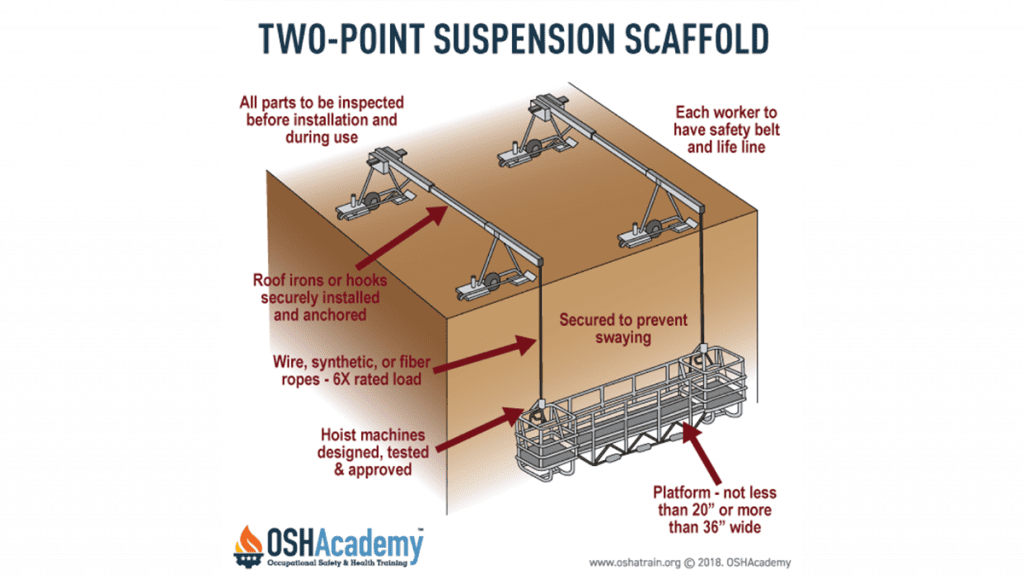
Swing stage scaffolding is a platform that hangs from a building, suspended by either ropes or cables that are connected to stirrups at each end. It is also commonly known as two-point adjustable suspension scaffolding.
This type of motorized scaffolding is the most common type of suspended scaffolding used around the world, as it’s convenient to operate on large-scale projects. Swing stages are easily installed, dismantled, and transported from one location to another.
Swing stage scaffolds are typically used for window cleaning, painting, building maintenance, and installing signage for tall buildings and structures, as well as on construction sites for high-rise buildings. Swing stages are also used in indoor areas to access high or narrow, hard-to-reach zones that are inaccessible with other scaffolding systems.
2. Catenary Scaffolding
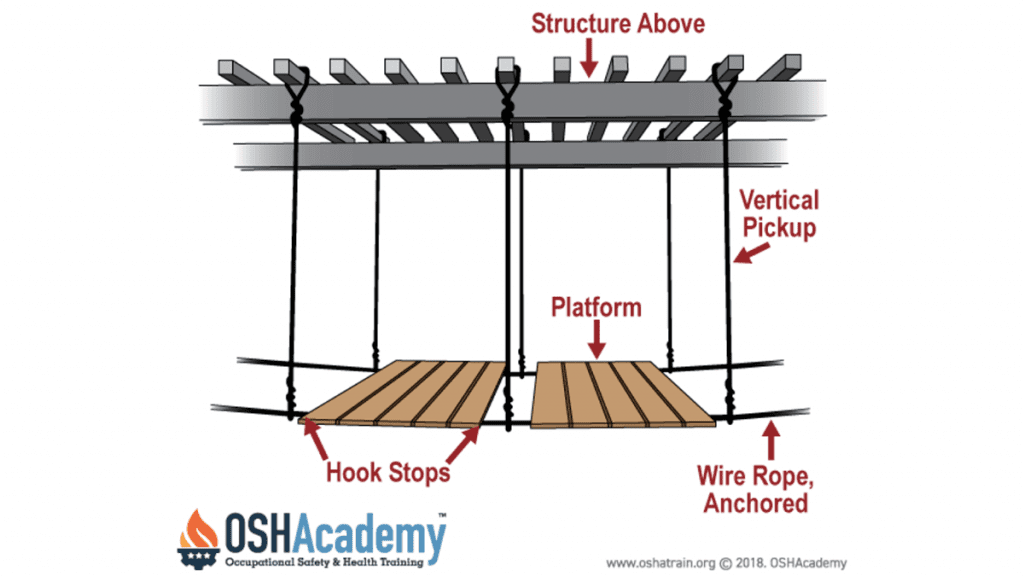
This type of scaffolding is set up by attaching a working platform to two horizontal, parallel ropes. These ropes are suspended from structural supports of the building, such as beams and columns. The working platforms have hook-shaped stops to prevent them from slipping off the wire rope. This is an important feature as the wire ropes are the only support for this scaffold.
As with all suspended scaffolding, catenary scaffolding is favored for its efficiency. It requires less time, money, and energy than constructing a tall scaffold.
Catenary scaffolding is used in the construction, renovation, and maintenance of high-rise structures. This is because it’s more time- and cost-effective to suspend a platform from above a tall building, rather than building a scaffold from the bottom up. Catenary scaffolding is also commonly seen on bridges and offshore rigs.
3. Float/Ship Scaffolding
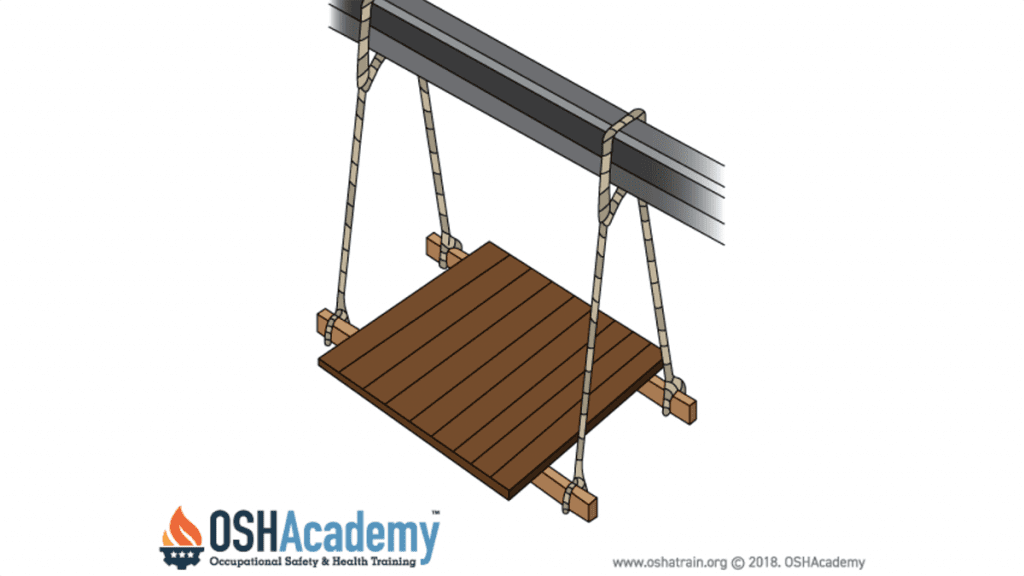
A float scaffold, also referred to as a ship scaffold, is a suspended scaffold system that consists of a wide platform that rests securely on two parallel bearers, supported by overhead hanging ropes of a certain fixed length.
These types of scaffolds are not designed to support more than three workers and light materials or tools. Therefore, they’re not used for transporting heavy loads of materials, but only for workers to carry out smaller tasks.
Float/ship scaffolds are usually used for small maintenance and renovation jobs on buildings that don’t require heavy lifting, such as riveting, bolting, and welding.
4. Interior Hung Scaffolding
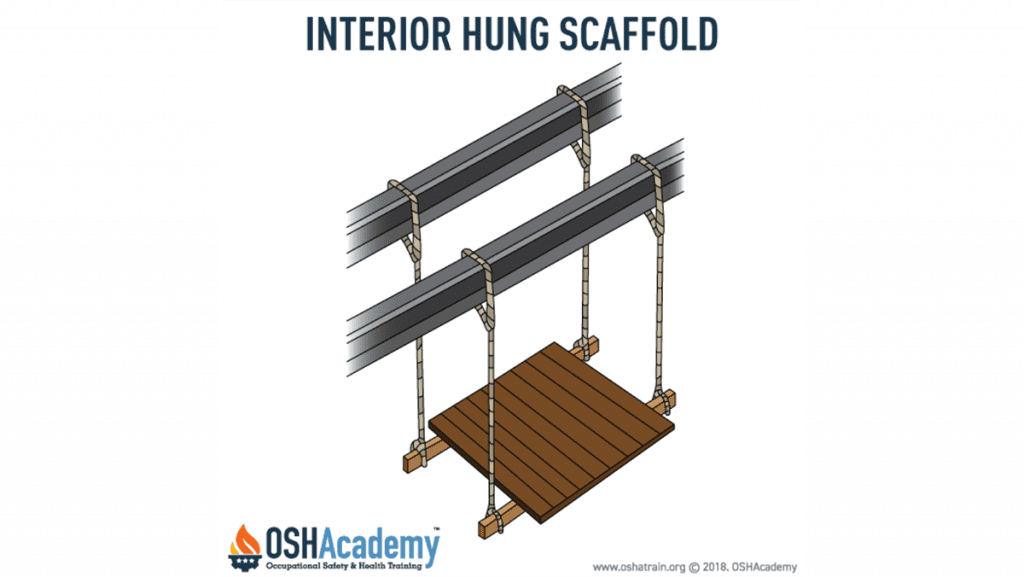
An interior hung suspension scaffold consists of a platform suspended from the ceiling or roof structure by fixed-length supports. Suspension ropes or cables are connected to overhead supports with shackles, clips, or thimbles.
Interior hung scaffolds are usually only suspended from roof structures such as ceiling beams, which must be inspected before this type of scaffold can be used, in case it can’t support the scaffold’s weight.
These types of scaffolds are usually used for indoor jobs such as painting, repair and maintenance. They typically can’t be extended as the supporting cables are of fixed-length.

5. Multi-level Suspended Scaffolding
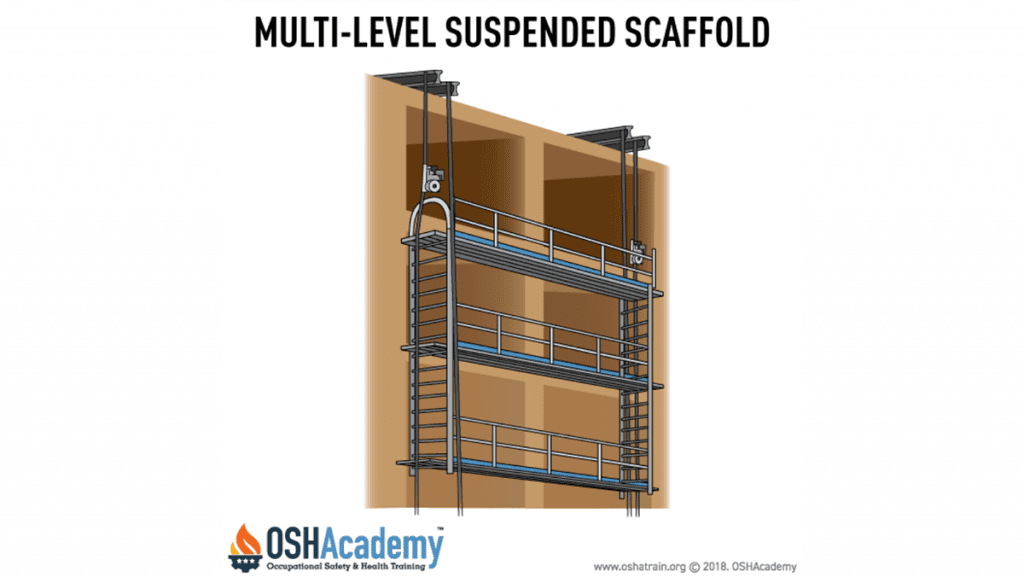
Multi-level suspended scaffolds are suspension scaffolds with a series of platforms situated at various levels that are resting on common stirrups, instead of just one platform. They are suspended by more than two ropes with overhead supports.
Multi-level suspended scaffolds are usually used on high-rise construction projects to work on different levels simultaneously or to speed up efficiency. They are able to carry heavy loads including workers and materials.
6. Multi-point Adjustable Scaffolding
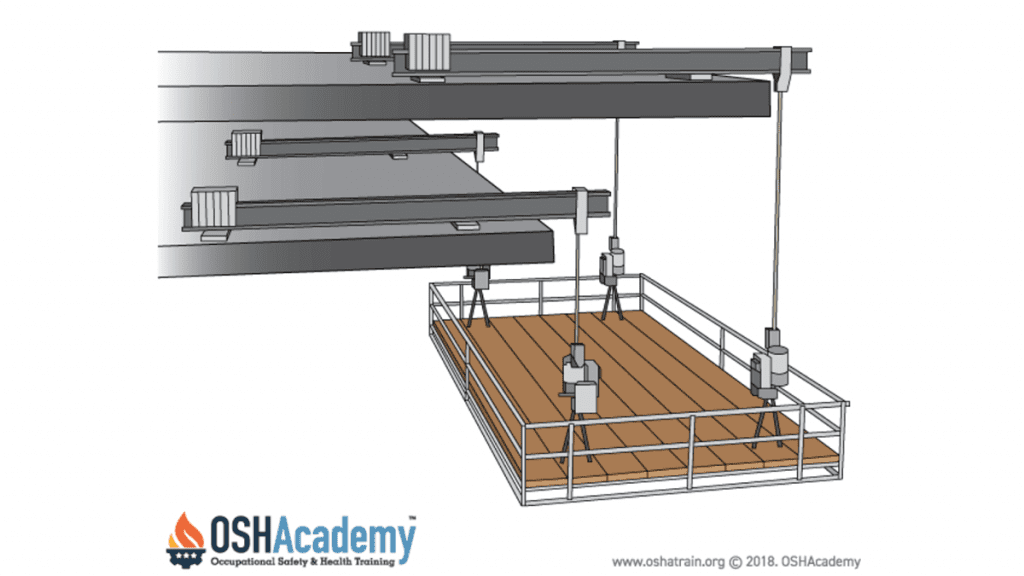
Multi-point adjustable scaffolds consist of a platform or platforms that can be raised or lowered accordingly. They are suspended by more than two ropes from overhead supports.
They are typically used for working on projects such as tanks, silos, stacks, and chimneys. This is because they are easily adjustable for working on different levels of a structure without needing to dismantle or reassemble the entire scaffold.
7. Single-point Adjustable Scaffolding
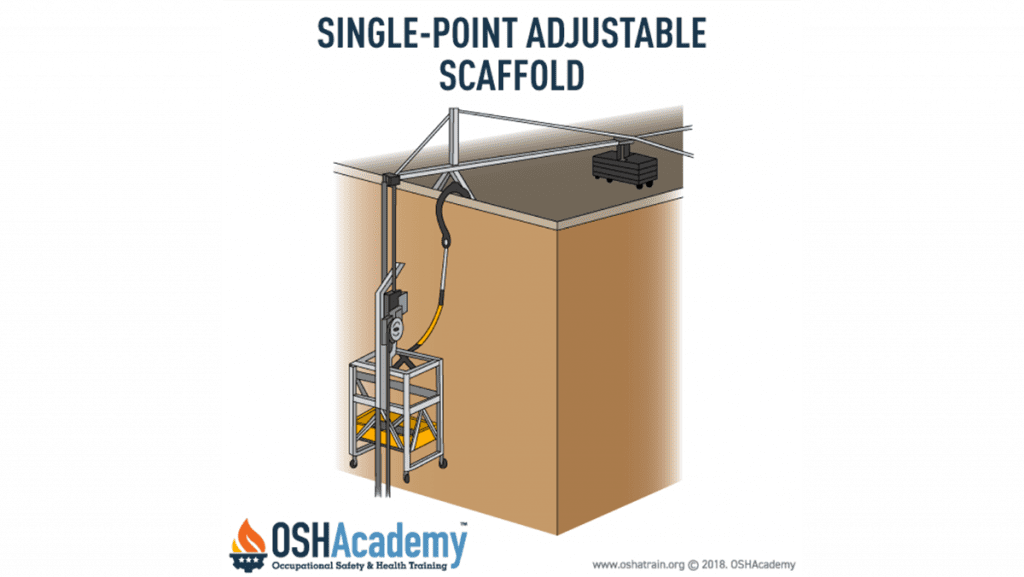
A single-point adjustable scaffold, also known as the boatswain’s chair, consists of a platform suspended by only one rope, compared to the two ropes that a multi-point adjustable scaffold uses. This scaffold is also adjustable, equipped with the ability to move the platform to desired levels.
A common usage of this scaffold is for window washing and maintaining the outside of tall buildings like skyscrapers. Compared to the multi-level adjustable scaffold, it cannot carry as heavy loads of materials as it’s only supported by one rope.
8. Needle Beam Scaffolding
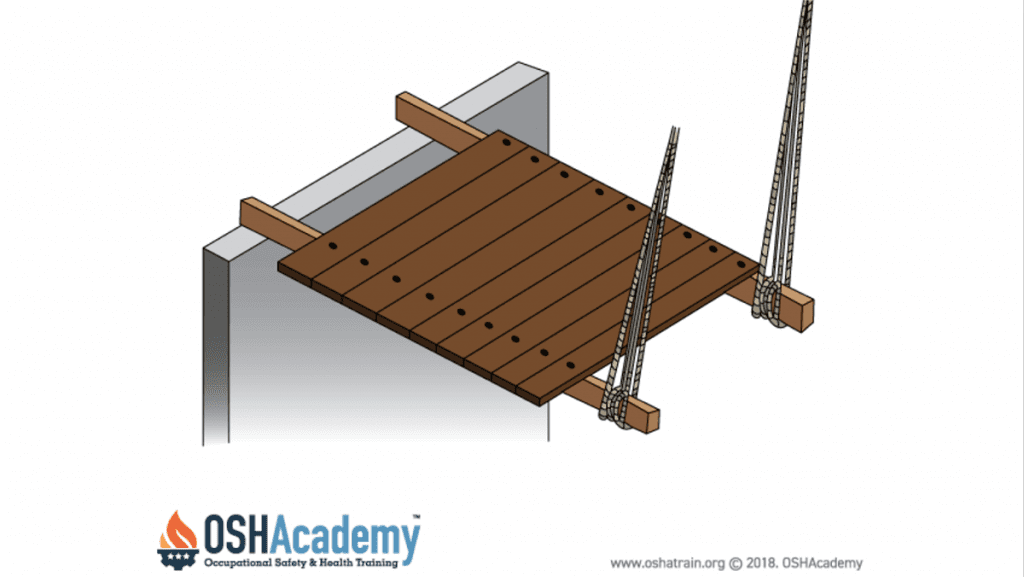
A needle beam scaffold consists of a platform that rests on two parallel horizontal beams called needle beams, supported by overhead wire cables. Needle beam scaffolds are supported by the building, like other suspended scaffolding systems, instead of the ground.
Needle beam scaffolds are used for light work such as riveting on steel structures. They are commonly used on construction sites due to their adaptability to different situations and locations. They are not meant to carry heavy loads or materials.